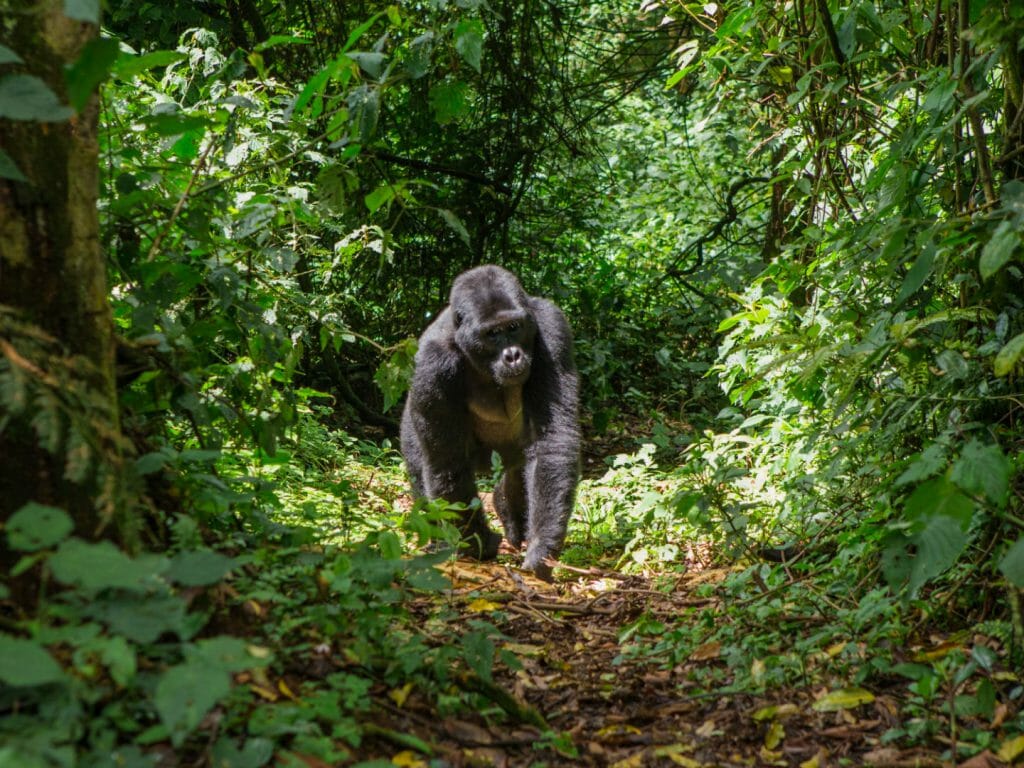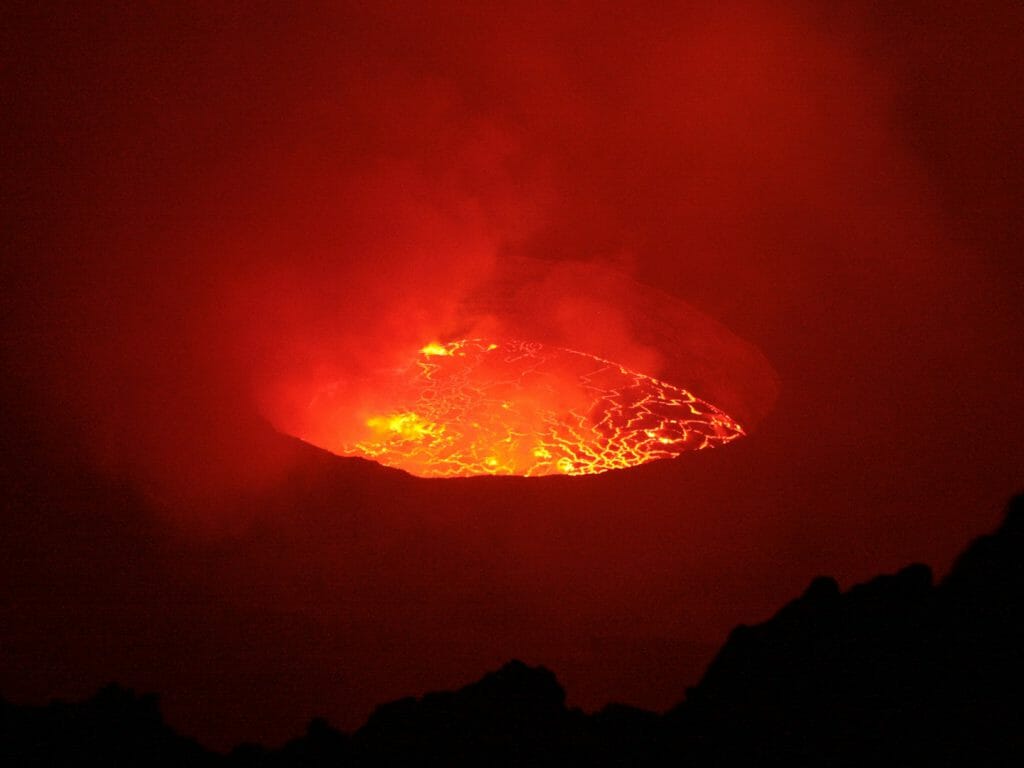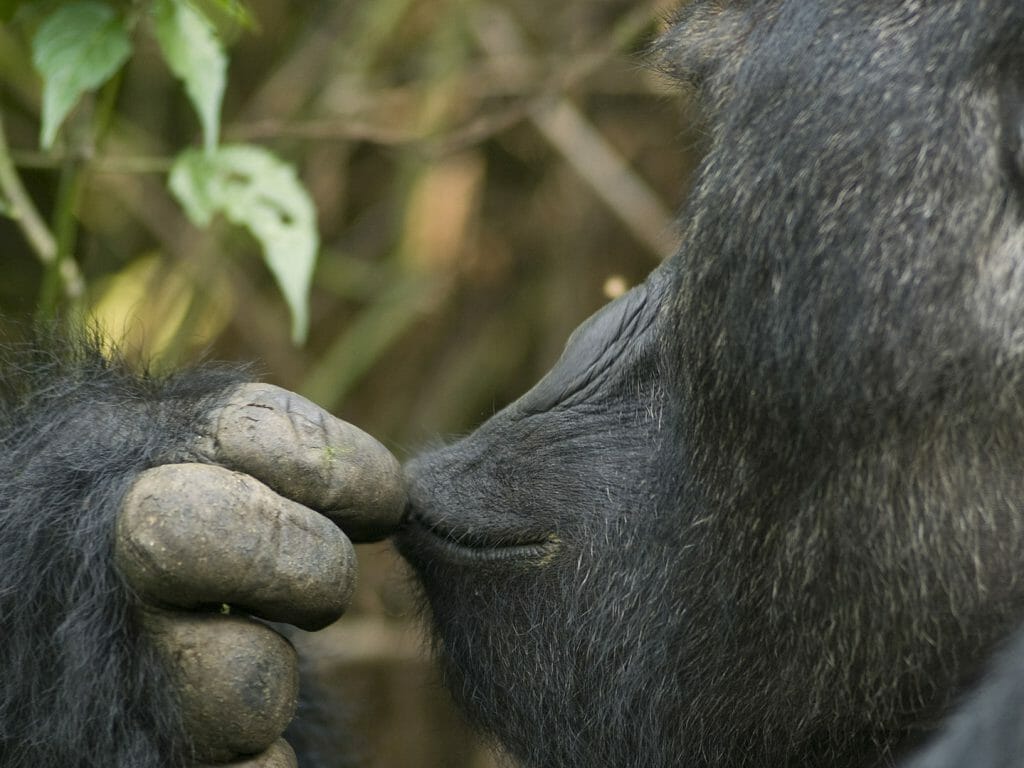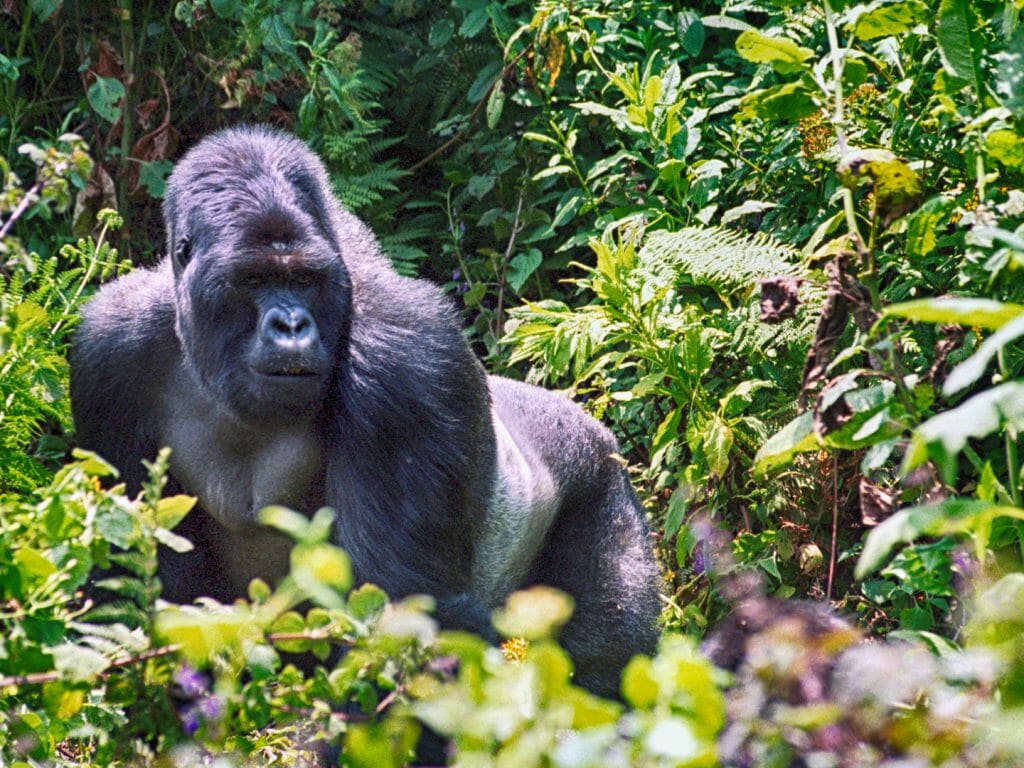The volcanoes of the Virunga Park in the Democratic Republic of Congo are without doubt one of its best known features, indeed Virungas is a Kinyarwanda word that means volcanoes. Chief among the Virunga volcanoes is Nyiragongo, not on account of its height – that mantle goes to Karisimbi and its 4,507 metres – but rather its nature.
“What does Nyiragongo mean?” I ask
“Mountain of Fire” was my guide’s matter-of-fact reply.
The volcano, which contains the largest active lava lake in the world, is well named. It was the chance of glimpsing this fiery furnace that brought me to the region and is the big draw card for many tourists. Yet, whilst a tourist attraction, Nyiragongo and the other volcanoes are a mixed blessing for people living nearby. They bring both riches and ruin. On the one hand the volcanic soil is rich and fertile and hence the density of the population. On the other hand they destroy. In its last eruption of January 2002, the lava flows of Nyiragongo invaded villages and obliterated some 20% of the nearby town of Goma, leaving 120,000 people homeless. The population evacuated the town but fortunately the flows invading the town were slow-moving and there were only around 40 direct victims of the eruption.
Between November 2002 and November 2004, Nyiragongo alone emitted as much sulphur as all the other volcanoes in the world put together. This had an important impact on the environment: in a four kilometre radius around the crater, the vegetation was destroyed by acidic gases.
More recently the volcano has been stable and also, significantly, so too the region. After years of fighting, the area is now opening up to tourists although accompanied by an armed ranger throughout. Importantly for the local populace it means that they can get on with their lives.
Driving to the start of the climb, it is clear that there is so much potential here. There is a latent beauty to the land. In the distance the backdrop of the blue silhouettes and clean lines of rounded hills shorn of trees bar a vestigial crown. The soil is rich like dark chocolate. Everywhere a riot of vegetation. Neat plots proliferate. Banana trees are ubiquitous.
Women walk elegantly along the side of the road, one arm, like a tea pot handle supporting their load. Babies on their backs. Young girls struggle with yellow containers full of water. Motorbikes with several passengers bounce along rutted dirt roads. Children play football with makeshift balls of tied up plastic.
The bush is singing. Music blares out. Horns add to the cacophony of sound.
The houses are built with a bamboo skeleton plastered with mud. On the whole the houses are sturdy but some lean askew, wooden stakes propping them up, preventing the inevitable. Walls of volcanic rock surrounding the plot a sign of pride. Houses of wooden boards with edges painted and corrugated iron roof a sign of wealth.
A wealth of stereotypical images but also the more incongruous. One man in a pink yellow leather jacket, another in a bright orange balaclava. Wooden bikes with wooden wheels and rubber tyres used to ferry loads. There is nothing homogenised about the DRC – it does not bear comparison.
So too climbing Nyiragongo.
White vapour billows from its cone. I gulp ominously, not at the sight of the vapour but the volcano itself. Reaching 3,470 metres, Nyiragongo looks a long way away. It is not so much the distance to the summit – only eight kilometres – but the steepness of the slopes and that we have a climb of some 1,400 metres.
“Malembe, Malembe (the Lingala equivalent of the Swahili ‘pole pole’) is the secret to climbing Nyiragongo,” urges our guide.
We do just that and start slowly through the humidity of the forest. We emerge from the forest onto an ankle-breaking path of small volcanic rocks and eventually onto actual lava flows. We pass the vent from which the lava lake drained in the 2002 eruption. An innocent plume of steam the only remnant of a violent past.
The path begins to climb steeply and the vegetation changes. The temperature drops yet my sweat levels rise. My breathing quickens, my pace slows. After a gruelling six hours we reach the summit, nagged by the question as to whether it was worth it.
The jagged edges of the rim of the volcano plunged into a crater of billowing smoke and cloud. I could see nothing. Where was the lake? How deep was it? How big was the crater? Sensing my disappointment Charles, our guide assured us that it would clear.
Struck by cold and fatigue I was not sure. My only thoughts were to descend a few metres to the refuge of the basic huts and put on some more clothes to keep the biting wind at bay.
Fed and clothed a red glow appeared across the night sky, not just metaphorically but literally. The cloud had cleared and I scrambled quickly back to the crater’s edge. I gasped in awe at the size of the two kilometre crater in front of me. But it was the sight of the crashing and roaring of the boiling lava lake that was truly mesmerising. A cauldron of magma bubbling away and occasionally spurting and frothing. Its red-orange surface riven by red lines as if boundaries on an ever-changing map. Transfixed I stared and stared. Nyiragongo is well named.









